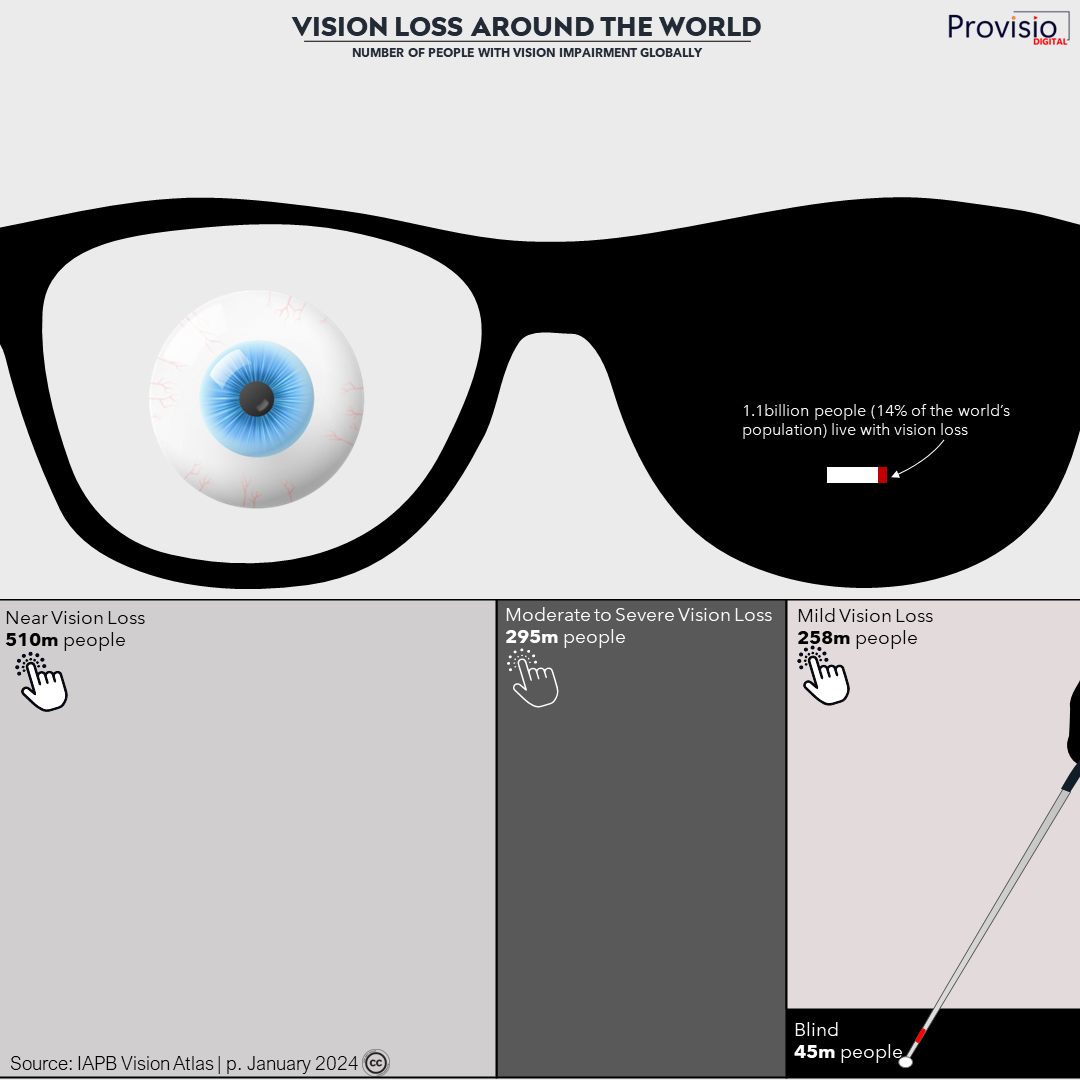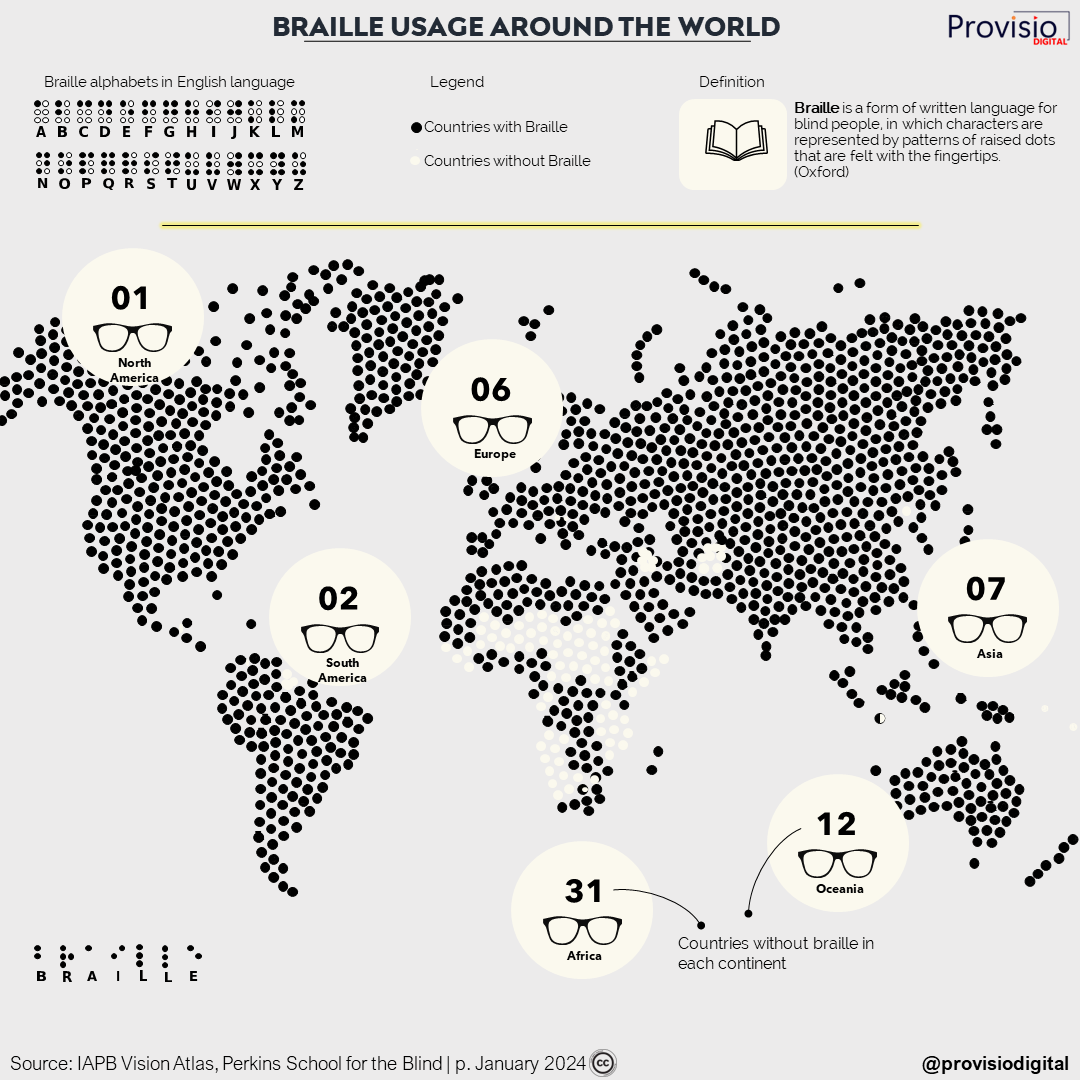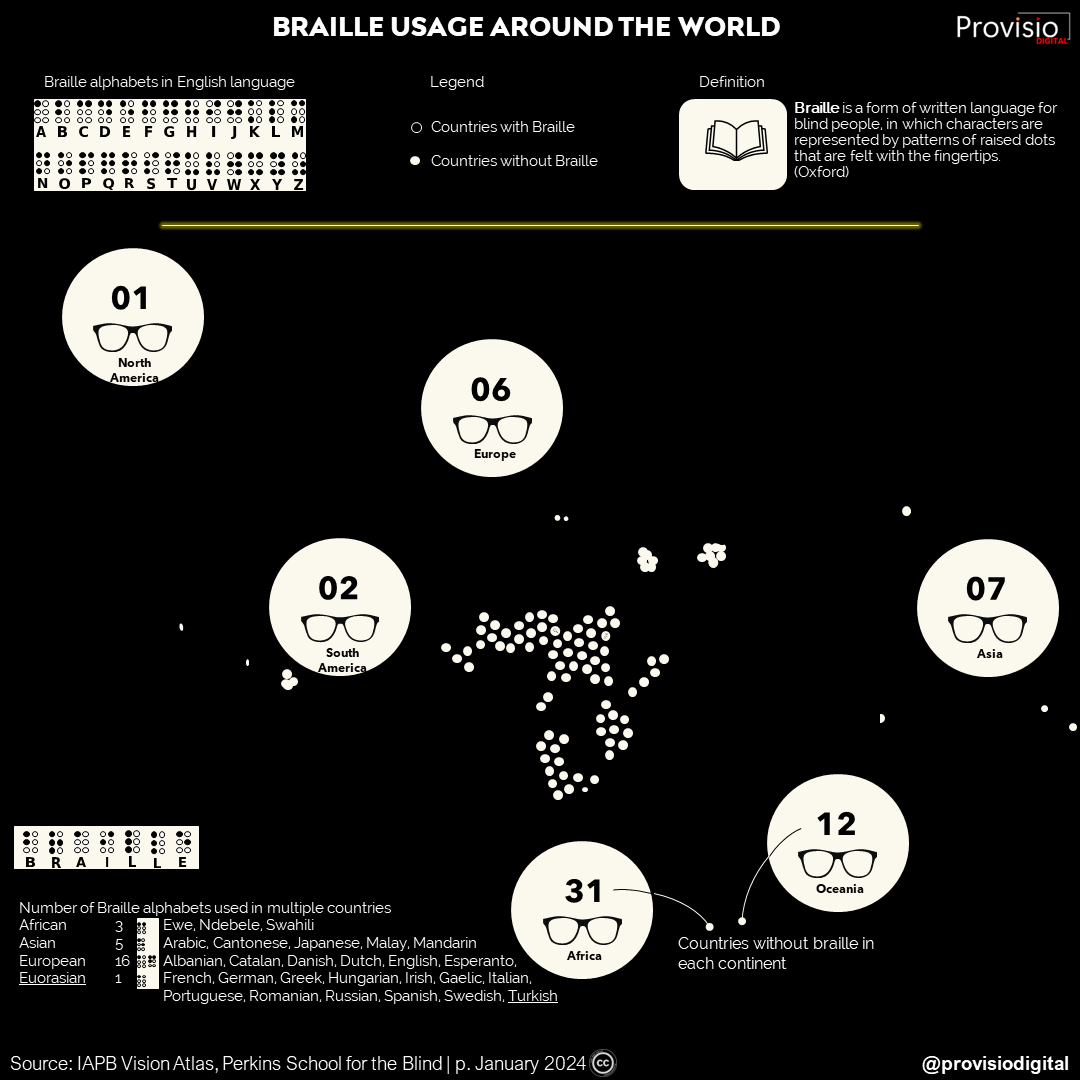Why We Looked Into This? »👀
|
Vision Loss Around the World
Globally, there are 1.1 billion people living with vision loss, which constitutes 14% of the world’s population. According to the IAPB, there are four categories of people living with vision loss: the Blind (43 million), Moderate to Severe (295 million), Mild (258 million), and Near Vision loss (510 million). It is projected that 1.7 billion people will have vision loss in 2050.

The top five causes of vision loss are:
- Uncorrected refractive error: 161 million
- Cataract: 100 million
- Glaucoma: 8 million
- Age-related macular degeneration: 8 million
- Diabetic retinopathy
The Use of Braille Around the World
The braille alphabet provides a way for blind and partially sighted people to read and write using a special code of raised dots. It enables them to read by running their fingertips over the patterns of dots and also to write using various tools. Braille can be used by everyone to read.


Analysis of The Data – Research Findings
- Most European countries have access to Braille, with several languages using Braille in multiple countries. 44 European countries (including Turkey and Russia – Eurasia) have access to Braille with Russia, Turkey, Germany, France and United Kingdom (England, Northern Ireland, Scotland, Wales) with the largest populations. The 6 countries without access to Braille in the European continent are Kosovo, Liechtenstein, Monaco, Montenegro, San Marino and the Vatican City. Of these countries, only Kosovo has a population over 1 million people.
- North American countries, such as the United States, Canada, and Cuba, show a high prevalence of Braille access. Belize is the only country without access to Braille. With 96% coverage, it is the continent with the highest access to braille.
- In Africa, over half of the countries (31 out of 54) do not have access to Braille, showing a lower prevalence on the continent. Tanzania and Sudan have the highest population without access to Braille while Nigeria, Ethiopia and Egypt have the highest population with access to Braille. Three African languages (Ewe, Ndebele and Swahili) are used in different countries but when compared to Europe’s 15, this highlights the need to increase access to indigenous languages.
- Oceania generally has a low prevalence of Braille access, with only four countries having access. The 3 largest countries in population (Australia, Papua New Guinea and New Zealand) have access to Braille while Fiji has the highest population (nearly 1 million people) without braille.
- The Asia region has the highest total population with Braille access but there is still a significant portion of the population without access. This could be because it is the continent with the largest number of people in the world. Braille use appears to be more common in Asia compared to Africa and Oceania, with countries like India, China, Indonesia, Pakistan, Bangladesh, Japan and Philippines demonstrating high accessibility to Braille.
- South America, while having fewer countries with Braille access, shows a significantly higher proportion of its population with Braille access, indicating strong infrastructure for the visually impaired. The two countries without access to Braille (Guyana and Suriname) have a combined population of about 1.4 million people.
- In general, 141 countries have access to Braille, while 59 do not have access. The countries with the largest populations having access to Braille include India, China, the United States, Indonesia, and Brazil.
- Based on the data provided, the countries with the largest populations having access to Braille are India (1.4 billion), China (1.4 billion), United States (333 million), Indonesia (275 million) and Brazil (215 million).
- The countries with the largest populations not having access to Braille are Tanzania (65 million), Sudan (46 million), Iraq (44 million), Afghanistan (41 million) and Angola (35 million).
- The country with the largest population having access to Braille is India, while the country with the largest population not having access to Braille is Tanzania.

This work is licensed under a Creative Commons Attribution-NonCommercial 4.0 International License.


